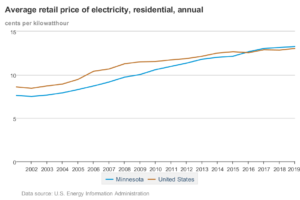The History of the Reliant Energy Organization and their growth
The organization was initially known as Houston Industries (NYSE: HOU), and Houston Lighting and Power was its subsidiary. In August 1996 HI shut on consolidation with NorAm Energy Corp, a gaseous petrol utility. The joined organization, starting around 1997, had resources of $18 billion and yearly incomes of about $9 billion. By November 1997 there was a distributed report expressing that the organization Reliant Energy reviews wished to secure Central and South West Corp. Hello, there declined to remark. In 1999, Houston Industries changed its name to Reliant Energy and its new NYSE image was REI. It was booked to start exchanging under REI on February 8, 1999.
In 2002, Texas liberated the power market and Reliant then contended with other energy organizations like Direct Energy and TXU Energy. Right now, Reliant Energy is additionally isolated into two public corporations: Reliant Resources, Inc. what’s more, and CenterPoint Energy, Inc. (NYSE: CNP). At the point when the territory of Texas liberated the power market, the previous HL&P was parted into a few organizations. In 2003 HL&P was parted into Reliant Energy, Texas Genco, and CenterPoint Energy.

Center Point Energy
- CenterPoint Energy was made when Reliant Energy converged with a circuitous auxiliary of CenterPoint Energy, Inc. Because of the consolidation, Reliant Energy investors got one portion of CenterPoint normal stock in return for each portion of RRI normal stock they held before the consolidation. A controlled utility, CenterPoint Energy became one of the biggest U.S. energy conveyance organizations, serving 4.7 million metered clients.
- In late 2002, CenterPoint appropriated the supply of Reliant Resources, Inc. to CenterPoint investors. This side project made Reliant Resources with a technique to give serious discounts and retail energy administration under the Reliant Energy brand. Its organizations remembered the power age and retail energy administrations for Texas’s recently liberated power market. On the discount side, Reliant possessed, had an interest in, or rented 37 working power age offices serving five locales of the United States.
- In January 2007, the Texas power market turned out to be completely liberated, and Reliant started to offer a variety of items, adaptable help choices and valuing plans to different clients. As of now, Reliant was the second biggest mass market power supplier in the province of Texas, with a yearly income of $10.9 billion and a greater number than 3,500 workers. In February 2007, Reliant Energy declared plans for Mark Jacobs, current boss monetary administrator, to succeed Joel Staff as CEO and for Brian Landrum to become head working official.
Environmental Records
Analysts at the University of Massachusetts Amherst have recognized Reliant Energy as the 36th-biggest corporate maker of air contamination in the United States, with about 34 million pounds of poisonous synthetic compounds delivered up high consistently. Significant contaminations demonstrated by the review incorporate sulfuric and hydrochloric corrosive as well as manganese, chromium, and nickel compounds. In December 2007, the US territory of New Jersey sued Reliant Energy, guaranteeing that discharges from a Pennsylvania coal-terminated power plant hurt the state’s air quality.
New Jersey claims outflows of brown haze and corrosive downpour parts sulfur dioxide and nitrogen oxides from Reliant’s Portland Generating Station in Northampton County, Pennsylvania, float into its domain. The claim likewise asserts that Reliant disregarded the government Clean Air Act by changing and working the plant without the necessary contamination control gear and development grants. In February 2012, in light of an EPA administrator, GenOn Energy declared they would close down the Portland Generating Station in 2015. Dependent Energy professes to have put forth attempts toward additional ecologically protected rehearses using sustainable assets, for example, sun-oriented energy, wind power, landfill gas, and coal decline.

